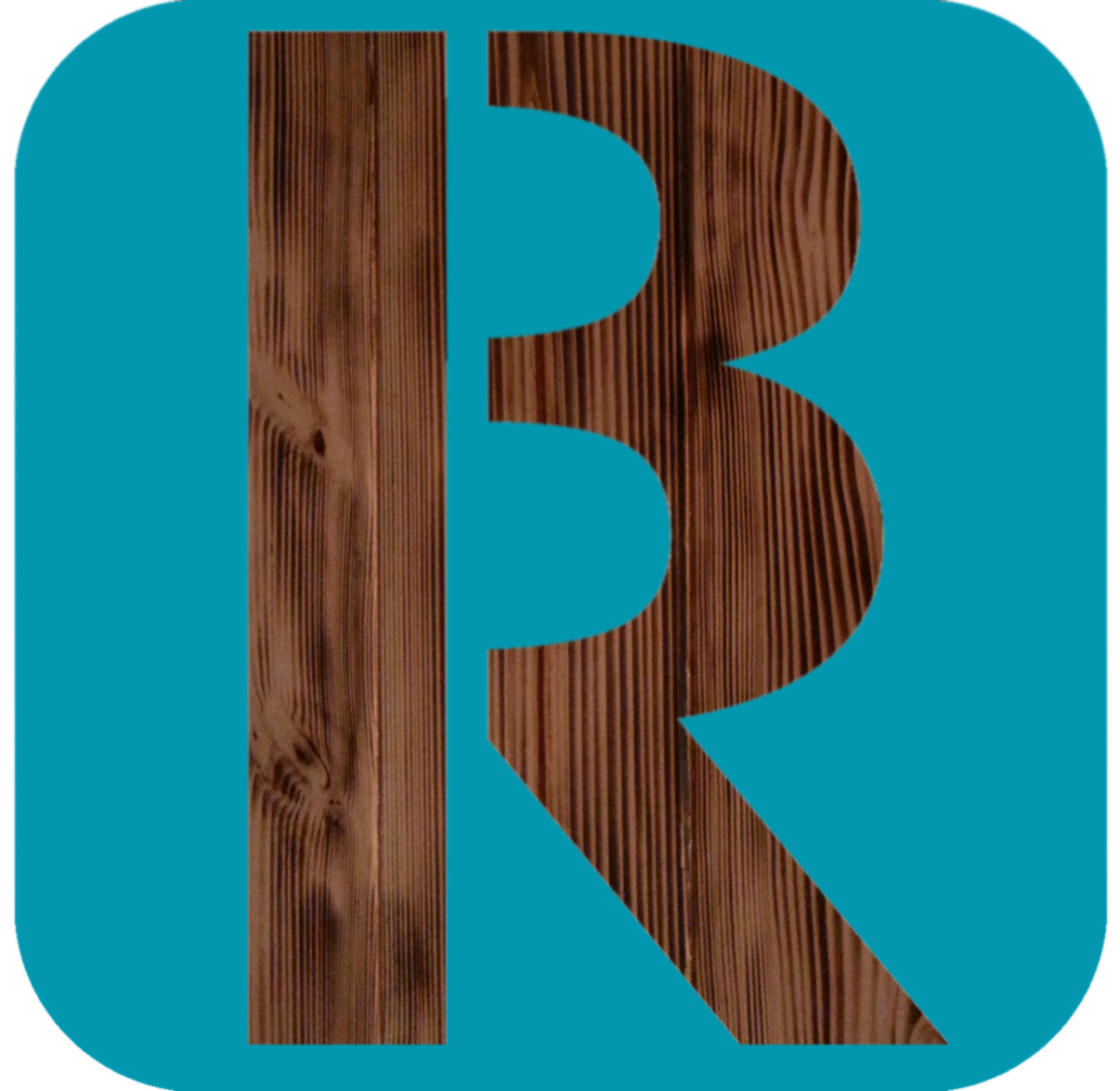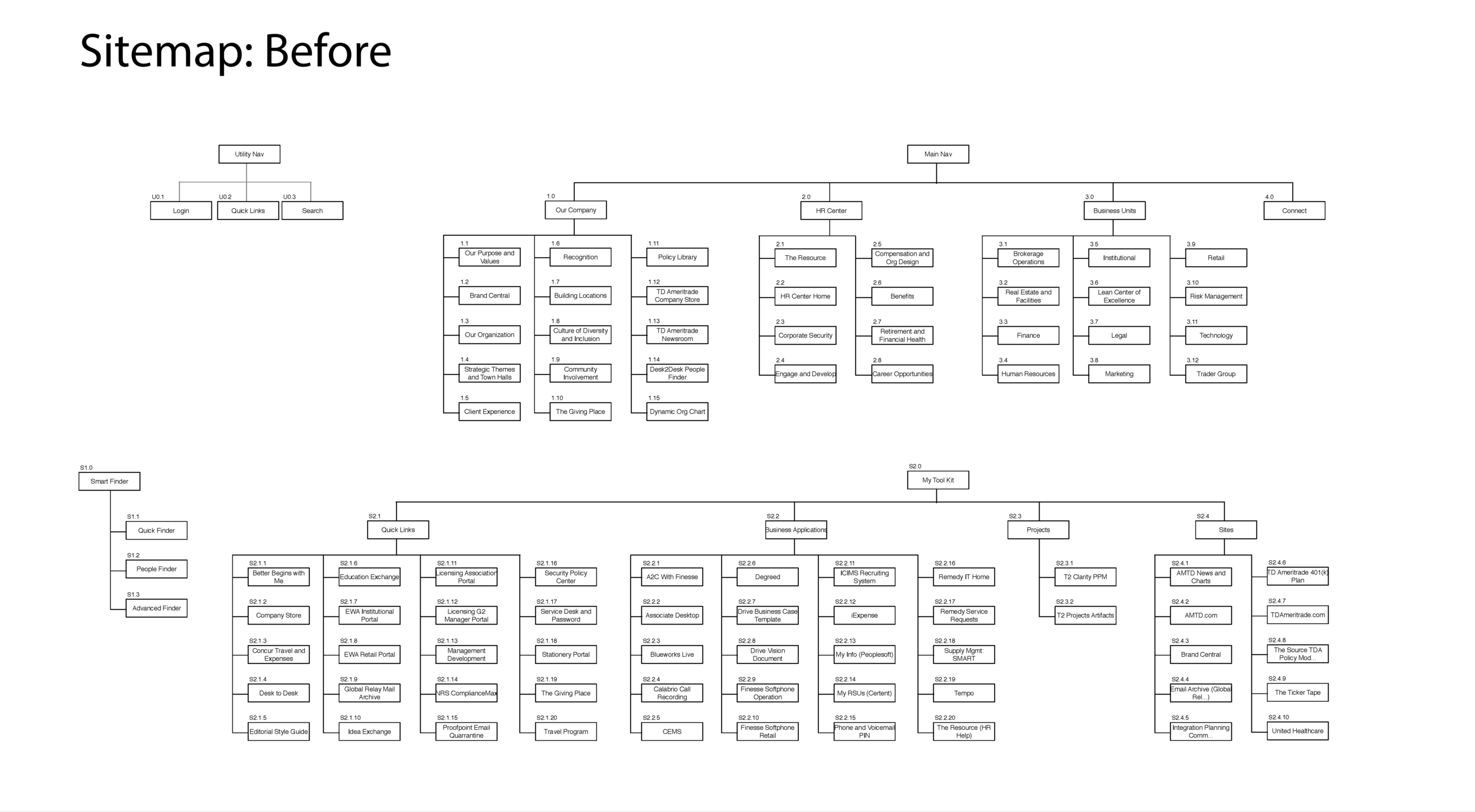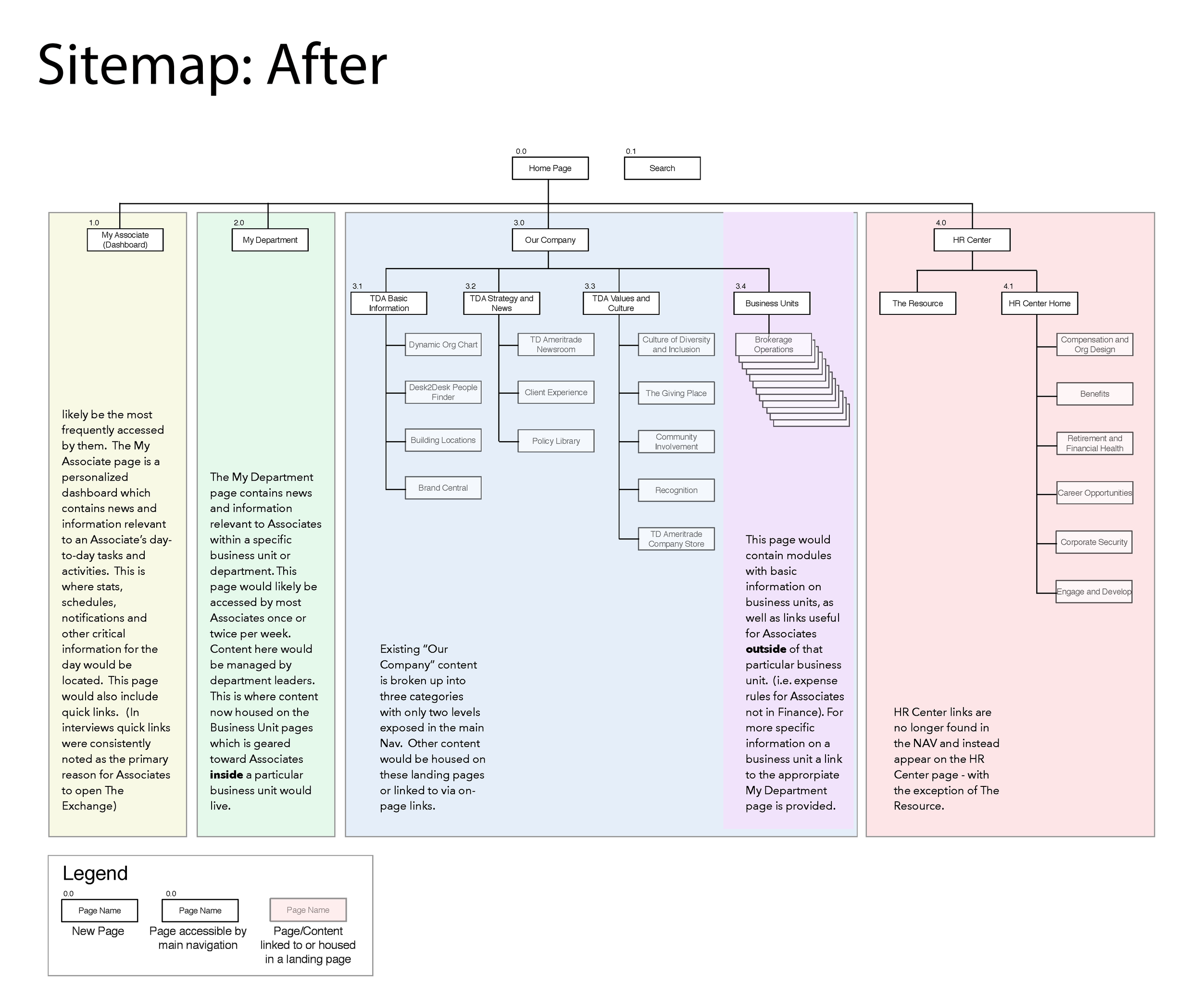Digital Workplace Transformation
Team:
project manager
visual designer
developer
UX designer (Me)
Project:
large financial services corporation
digital workplace transformation
Methods:
research
strategy
design
Discovery
Due to a recent merger, the company doubled in size overnight and management of tools and practices was desperately needed. During discovery, my job was to define who their employees were, and what they needed to meet their goals. In the design phase I redesigned two company-wide intranet sites used by employees throughout the organization while my team worked to select and integrate the right tools for the job and to provide content strategy.
Phase 1 deliverables included:
Now you know it’s a design project.
User personas: 10 key groups within the organization
Journey maps: detailing a day in the life of each persona
Use cases/business requirements: Prioritized, consolidated list
Identification of process bottlenecks and improvements
Phase 2 deliverables included:
Annotated wireframes: Intranet website redesign
inVision prototype: functional with full visual comps
Stakeholder Research:
Research Phase:
6 cities
63 user interviews
4 days of job shadowing
5 group interviews
electronic survey
town hall meeting
stakeholder workshops
Interviews consisted of spending at least 30 minutes face-to-face with each individual, and wherever possible included an hour of job shadowing as well as asking follow-up questions by email.
Because some of the interview were to be conducted by other team members I created an interview instrument to guide the sessions, and a persona template to record initial impressions during and immediately after the interview. Additionally, each interview was recorded and of course I took lots of notes.
Communication:
Throughout the project our team kept in touch through:
daily scrum meetings
bi-weekly working sessions w/client
monthly check-ins w/project sponsor
daily emails with a embedded developer
Because of our close contact with the client, work to implement a standardized messaging platform throughout the company was started during the discovery phase so feedback could be gathered and implemented throughout the project.
Obviously, this isn’t my team, but we all like pictures.
Seriously, it was a lot of spreadsheets.
Synthesis:
There was a sizable amount of data which we sorted and condensed using several methods.
Indexed in Excel online
systems used by personas
recurring pain points
notable quotes
research backlog
Captured in Google Docs
Qualitative data
anecdotes
Quotes
Our research found 69 different systems in daily use company-wide and 10 primary personas managing as many as 15 systems each at any given time.
Personas:
Final iterations of the personas included all of the typical information:
motivations
goals
pain points
responsibilities
but also:
primary systems personas use
frequency of use for each system
comfort level with technology
notable quotes from interviews
With thousands of employees in this role, working through highly repetitive tasks, this was an important persona.
Journey Maps:
Journeys were divided into seven phases along the top of the map. Directly below, the experience was graphed according to:
customer satisfaction
employee satisfaction
company satisfaction (productivity/efficiency)
Top business requirements were also called out along the graph line.
The middle portion of the map shows the systems being used, and how users were using them.
Factors influencing the graph in each phase are listed along the bottom of the map.
Strategy and Requirements:
Prioritized business requirements for each persona were a key part of phase one’s deliverables.
The top three requirements were cross-referenced on the journey maps to tie the research more clearly into our recommendations.
Design
The client was thrilled with the research work, so the project moved into phase II, a full redesign of the client’s intranet, a content audit and strategy effort, and a migration to more unified software platforms.
Site Map:
Information Architecture solutions:
accommodates existing content (pending audit/strategy)
simplified hierarchy
realtime information foregrounded
standardized pages
The consolidated site architecture not only did well in testing, but was able to accommodate all existing content while the content tagging/audit/strategy efforts were underway.
Information architecture issues:
disjointed and sprawling
difficult to navigate
page hierarchy was ad hoc
information was buried, outdated or redundant
the site map was so labyrinthine that, in the interest of conserving time and expenditure, I only documented the first few levels of navigation.
Site Designs:
Delivered as:
annotated wireframes (3 breakpoints)
visual design comps
interactive prototype
Designed a highly personalized homepage. It was modular dashboard which allowed easy drag-and-drop user customization. Working closely with the client’s developers to access system APIs, functionality took call center employee’s from an average of 12 active windows on their desktop to only 3 or 4.
An adjunct to the user dashboards were new departmental pages. First was an internal-facing customizable dashboard to act as an information repository and forum for teams.
Second was an external-facing department page to act as a portal to services and information for departmental outsiders
These pages provided two dedicated experiences which connected both sets of users directly with their goals.
Reactions to the designs have been overwhelmingly positive as the client’s team works to bring them into reality. They are currently gathering departmental requirements and conducting content strategy efforts in preparation for further development.
Awesome, right? Want to check out more of my work? (Of course you do!)






